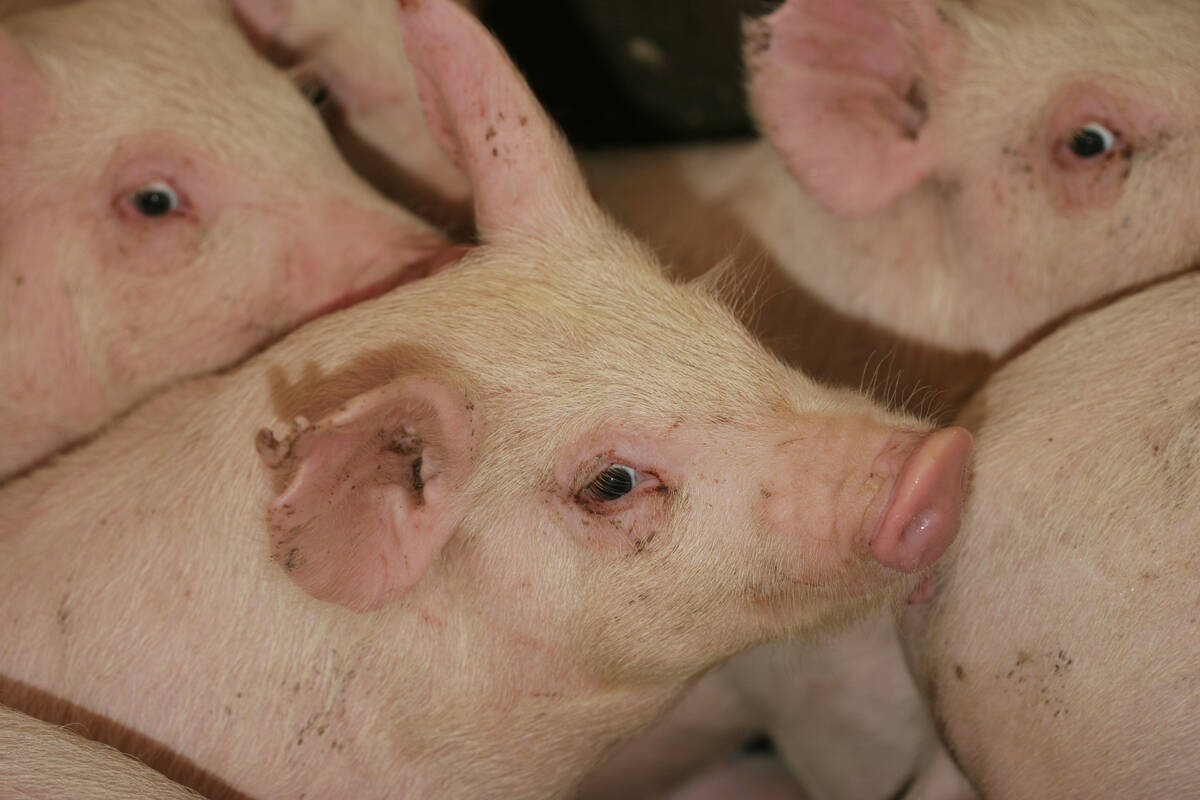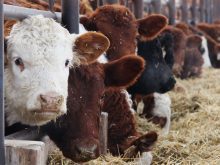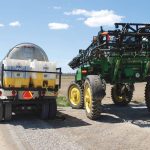RED DEER – When it comes to handling unruly hogs, the human touch may soothe the savage beast.
When two Ontario farms had trouble handling their market hogs, animal welfare specialists at the University of Guelph suggested the pigs needed more human contact.
Market hogs can be difficult to handle because they do not have much contact with people, said Tina Widowski, head of the university’s centre for the study of animal welfare.
The solution was to have stock handlers move among hogs as much as three times a week to see if the interaction helps animals get over their fear of humans and makes them easier to move at shipping time.
Read Also

The Western Producer Livestock Report – September 25, 2025
The U.S. national live price average for barrows and gilts was $81.21 Sept. 17. It was $78.37 Sept. 9. U.S. hogs averaged $106.71 on a carcass basis Sept. 17, up from $106.10 Sept. 9.
While the hogs must get over their anxiety, the people working with them must behave in a positive manner rather than creating fear and stress among the animals.
“Training and skill of stock people seems to make all the difference in the world with the welfare of an animal,” Widowski said at the Alberta Farm Animal Care annual meeting in Red Deer March 23.
“If an animal is handled negatively, it remembers.”
Fear and stress affect pork quality by making it pale and dry. As well, nervous animals have fewer piglets, produce less milk and do not grow as well.
The experiment, conducted over the course of 12 weeks, involved people moving among the hogs in a neutral manner using a pig board. Some pigs did everything possible to avoid contact while the bolder ones nosed the boards and boots of the person.
As time went by most of the hogs became less nervous. Twice a week visits gave the best results.
The greatest difference in animal behaviour seemed to occur at the processing plant when pigs were in holding pens and moved through a single file chute. Those with more human contact did not cluster in the far corners of the pen and there was less jamming at the chute.
The study is one of many designed to assess welfare and animal responses to different situations on the farm.
Much emphasis has been placed on measuring housing standards, said Widowski, but animal responses and reactions to situations, stockmanship and animal handling techniques also remain important.
There are standards to promote welfare such as adequate space per pig, number and location of feeders and drinkers, ambient air temperatures and techniques for procedures such as castration and euthanasia.
These are easy to assess but they do not account for the level of care provided by stock handlers or their attention to detail.
Attention to detail makes a difference for animal welfare and is reflected in an animal’s health, cleanliness and appearance, said Widowski. Behavioural responses, ease of movement, signs of pain and fear of humans can also be audited but assessment can be difficult and time-consuming.
“You need a keen observer to measure it in a practical setting and oftentimes it will indicate a problem but not necessarily indicate the source of the problem,” Widowski said.
She recommends keeping daily logs of animal care, the environment and procedures to handle situations like tail biting.
The behaviour of the person during handling is also important. It is also worth knowing whether the stockmanship improved with staff training.















